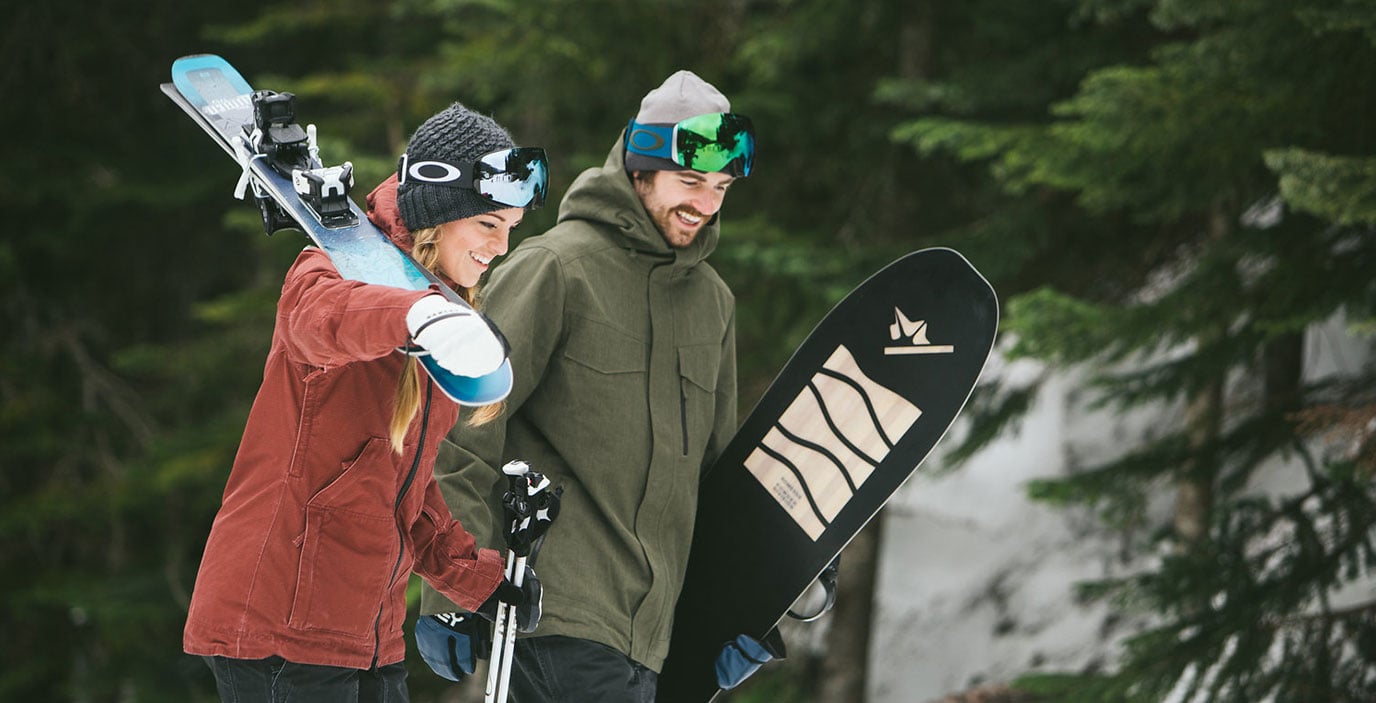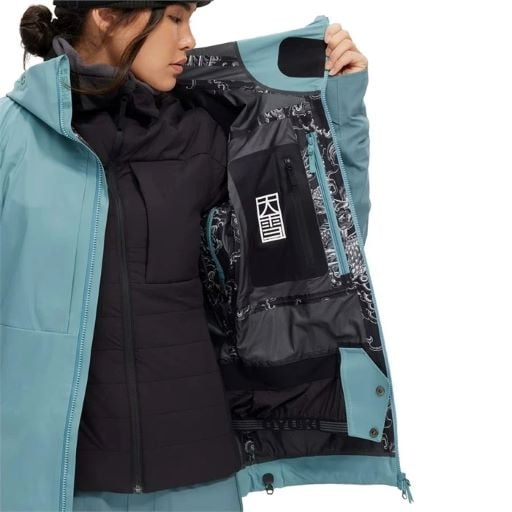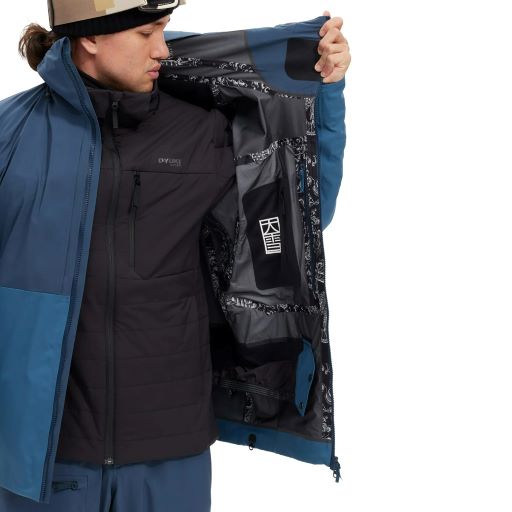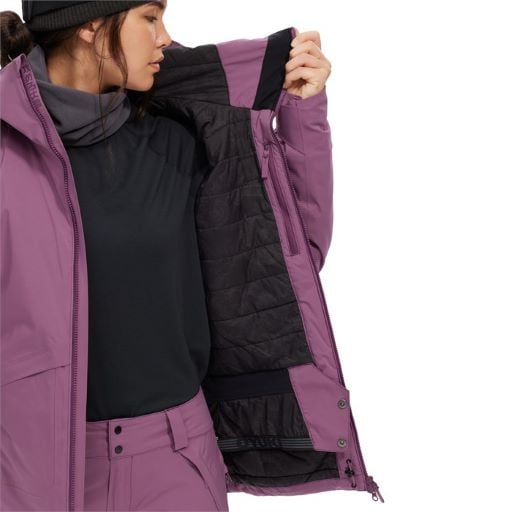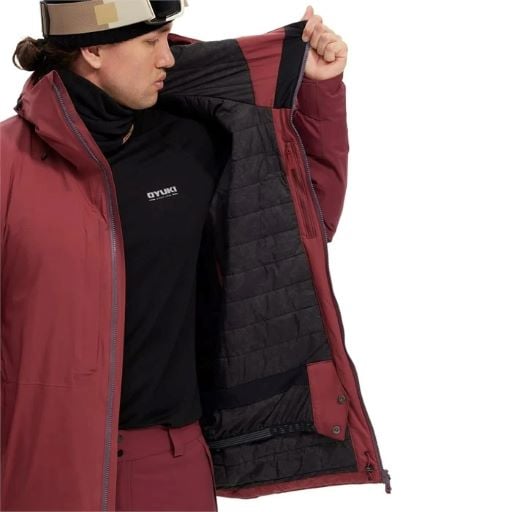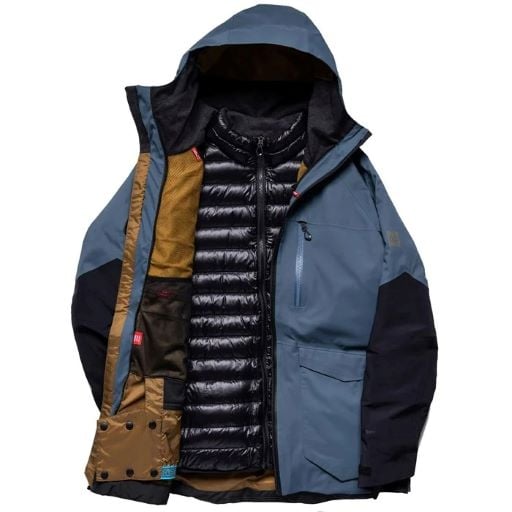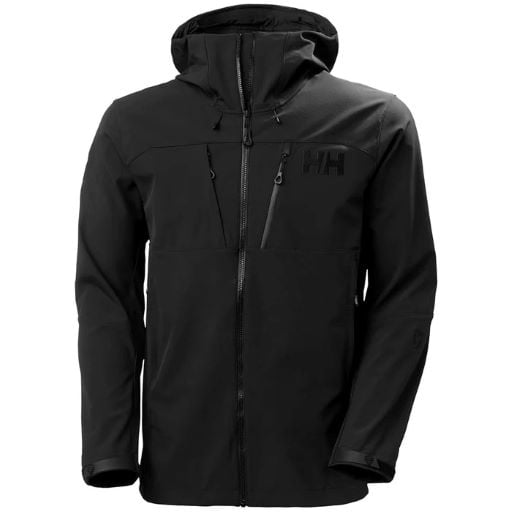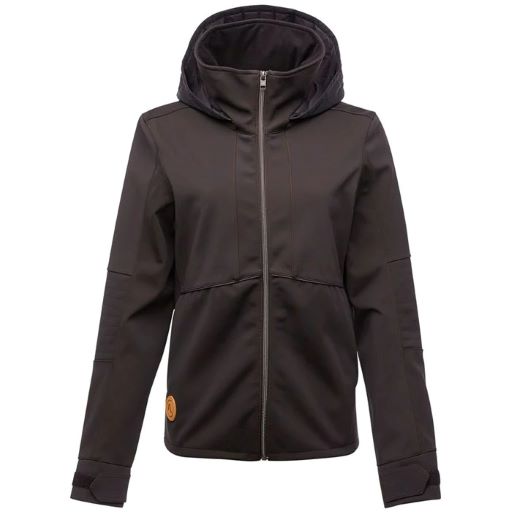How to Choose a Ski & Snowboard Jacket
Searching for a ski/snowboard jacket, you’re confronted with a vast range of styles, constructions, features, and price ranges. So we’d completely understand if you just threw up your hands in frustration, closed your eyes, and started clicking randomly. But please, please don’t do that — you don’t need to play jacket roulette. Instead, we’ve designed this guide to help simplify your choices and help you pick the best ski or snowboard jacket for you.
At the most basic level, a good ski or snowboard jacket does three things:
- It keeps you dry
- It keeps you warm
- It lets your body breathe so that the moisture it produces doesn’t sit against your skin and make you feel clammy.
The easiest way to break down how to choose a ski jacket is to think of it like an equation. You have a specific set of needs for your jacket, and the sum of those requirements will be a coat that works well for you. So before you even start searching for a new ski or snowboard coat, think about your specific needs:
- Weather - What sort of weather conditions will you most likely encounter?
- Is it typically colder and drier, like in Colorado? Or warmer and wetter like the PNW?
- Not sure what's typical for the mountains in your area? Check out our guide on How to Buy Outerwear for Skiing & Snowboarding by Region.
- Is it typically colder and drier, like in Colorado? Or warmer and wetter like the PNW?
- Activities - What sort of activities you’ll do in it
- Do you anticipate riding chairlifts at the resort? Or do you plan to do more ski touring/splitboarding?
- Features - What features are important to you?
- Do you like having large pockets? Pit vents? A powder skirt? Wrist gaiters? Or a hood vs. no hood?
Types of Ski & Snowboard Jackets
The first thing you can do to narrow down your search is to decide what type of ski or snowboard jacket you'd like. There are four main styles of ski/snowboard jackets:- Hardshell Jackets
- Insulated Jackets
- 3-in-1 Jackets
- Softshell Jackets
Shell Ski & Snowboard Jackets
Shell jackets, aka uninsulated jackets, are a common type of ski and snowboard coat because they’re versatile and give you the most control over your level of warmth. A hardshell jacket typically consists of a face fabric with a waterproof/breathable membrane laminated to the back. Jackets with this construction style are sometimes labeled as 2 Layer/2L or 3 Layer/3L for short. A hardshell jacket’s priority is keeping you dry and protected from the wind. Hardshells are the most waterproof jacket style, and they breathe reasonably well. But they won’t keep you warm, as that’s not their job. Instead, they’re designed to be worn over an insulating layer. This layering capability is what makes hardshell jackets so versatile. For example, if it’s freezing out, you can put a puffy and a sweater under your hardshell and stay toasty. But on warm spring days, you can just wear a base layer underneath and still be comfortable in the same jacket.
Insulated Ski & Snowboard Jackets
Insulated ski & snowboard jackets take that same hardshell outer material and then line it with insulation. The added material means they’re the warmest jacket style and are great for people who often deal with very cold temperatures. You can also layer other insulators underneath them, but you can’t remove the insulation, so on warmer days, you may overheat. Insulated jackets do an excellent job of keeping you warm and dry, but they don’t breathe as well as shell jackets since that insulation is built in, and it’s harder for moisture to wick out of it. Because of this, they’re not a good choice for skiers and snowboarders who hike or skin for their turns, as you’ll quickly overheat and get sweaty.
3-in-1 Ski & Snowboard Jackets
3-in-1 jackets are just a modular combination of a hard shell and an insulated jacket. They come with a hard shell outer portion that buttons or zips onto an insulated liner. So you have three wear options:
- Wear both components together on cold days
- Ditch the insulated liner and only wear the shell on warmer days
- Just wear the liner as an insulator on its own.
Softshell Ski & Snowboard Jackets
Softshells are the most specialized style of ski jacket. They put breathability at the forefront, and prioritize it over warmth and waterproofing. This makes them perfect for people who are exerting themselves a lot while skiing or snowboarding. They offer plenty of waterproofing to protect you from light snow, and they breathe so well that you won’t work up a sweat, even when you’re climbing mountains. Unfortunately, they don’t offer any insulating value, so you’ll have to wear a mid layer to stay warm. If you only ski inbounds, a soft shell is probably not the right choice for you, but if you like to explore the backcountry and live somewhere with a drier climate, a softshell will keep you very comfortable.
Waterproofing & Breathability
Now that we understand the different types of jackets, we can dive into the stats that reflect how they perform. This also has a big impact on the price you pay. The most obvious is waterproofing, followed by breathability. These are the main factors to pay attention to when comparing the weatherproof performance of different ski jackets - they’re the stats that will tell you which jacket will keep you dry and which will leave you soaked through. Both of these stats, and the technologies behind them, such as GORE-TEX, have a significant impact on price, with more weatherproof jackets often costing more money.
Waterproofing and breathability are both measured in increments of a thousand. So a jacket with a 10k waterproofing rating is less waterproof than one with a 20K rating. We recommend ski jackets with at least a 10k rating. Bumping up to 20k is a great idea if you live and ride in a wet climate like the PNW. Similarly, a 20k breathable jacket will be more breathable than a 10k ski jacket. These stats are often listed together like 20k/20k waterproof/breathable. If you’re curious about these rating systems, read our complete waterproofing and breathability ratings guide.
| Waterproof Rating (mm) | Water Resistance Provided | Conditions |
|---|---|---|
| 0-5,000 mm | No resistance to some resistance to moisture. | Light rain, dry snow, no pressure. |
| 6,000-10,000 mm | Rainproof and waterproof under light pressure. | Light rain, average snow, light pressure. |
| 11,000-15,000 mm | Rainproof and waterproof except under high pressure. | Moderate rain, average snow, light pressure. |
| 16,000-20,000 mm | Rainproof and waterproof under high pressure. | Heavy rain, wet snow, some pressure. Think PNW. |
| 20,000 mm+ | Rainproof and waterproof under very high pressure. | Heavy rain, wet snow, high pressure. |
Materials & Membranes
There is a wide range of materials that ski and snowboard jackets are made of, but when it comes down to it, many of them use some form of GORE-TEX. GORE-TEX is a third-party product, which means outerwear brands get a license from Gore to use it in their jackets, and Gore holds jackets that use its materials to specific quality and construction standards. As a consumer, that’s helpful because it removes a lot of ambiguity. For example, if a jacket lists GORE-TEX in its construction, you can easily look up its specific fabric and learn how waterproof, breathable, and durable it is.
That’s helpful because GORE-TEX is a waterproof-breathable membrane. That means it keeps water like rain or snow out and allows interior moisture from your body to pass through it. So it’s like a one-way gate for water that will enable it to escape but not enter. Depending on the grade of GORE-TEX used, companies can tweak the ratio of how impermeable it is from the outside and how breathable it is from the inside.
Along with GORE-TEX, other brands, including eVent and Polartec, market their own waterproof and breathable fabrics. They’re not inferior to GORE-TEX, they do the same thing differently, and they’ll list the same stats, so you know how they all stack up.
For further information on how GORE-TEX works, check out our GORE-TEX Fabric guide.
Insulation Type
There are a few things to consider if you’re looking at insulated ski & snowboard jackets. First off is the material used to insulate. Down insulation generally delivers the highest warmth-to-volume ratio, so you have a lighter jacket that keeps you warmer. However, if the down gets wet, it isn't as efficient at keeping you warm. Synthetic insulation weighs a bit more but keeps working even when sopping wet, so it’s a better choice for people in wet climates like the Pacific Northwest.
Insulation is generally measured in grams per square meter. The higher the number, the more insulation there will be, and the warmer it will keep you. Some manufacturers vary insulation weight through the jacket. For example, they put heavier insulation in the torso area and less in the arms, so it’s easier to move your arms, but your core stays warm.
Our How to Choose Insulated Jackets guide explains this topic further including more information on specific types of synthetic insulation.
Jacket Fit
Finally, the most personal attribute of all, fit. Most ski jackets should list their general fit cut, whether baggy, fitted, or regular. Think about how you want your jacket to look on the hill, and remember that you may be wearing some thick insulating layers underneath it. It’s a good idea to have a friend help you take some measurements of your body so that you can compare them to fit charts and figure out what size works best for you. Make sure there’s plenty of room across the chest, so you’re not restricted, and that the arms and long enough. Nothing sucks more than the sleeves riding up and leaving your wrists out in the snow.
For deeper dive into this topic, visit our Outerwear Fit & Jacket Length Guide.
Price — Why are some ski & snowboard jackets so much more expensive than others?
You may have noticed a huge range of prices for different ski jackets. You can get a fully insulated jacket at a big box store for under $100, while you can also buy a $600 shell at a ski shop. So what gives? What’s the difference? Well, it’s not that those ski shops are greedy. There are several significant differences between high and low-end jackets. More expensive jackets use high-end name brand materials. They license these materials and are held to a higher construction and quality control standard. So you’re paying for higher quality raw materials, more ethical labor practices, and much better warranties. With cheap, generic outerwear, there is very little quality control. They’re using cheap materials that may initially work well but will degrade quickly and leave you stranded without a warranty.
In addition, higher-priced ski and snowboard outerwear are more specialized than generic winter coats. The fit is tweaked so that it looks good and allows you to move freely. They’ll have features like a pass pocket and goggle wipes. Skiers and snowboarders design them for skiers and snowboarders, which you’ll notice after your first run on the mountain.
Jacket Features
Now that you’ve narrowed down the basics of how different jackets perform, it’s time to get into the details. These are some of the small things that will set one jacket apart from another. To some folks, these are deal breakers. So know what you should be looking out for!
Vents
Most ski jackets have zippered vents in the armpits or on the chest. These allow you to dump some heat without taking the jacket off. Some vents will also have a mesh lining to keep snow out while the vent is open. It’s a good idea to look for a jacket with easy-to-use vents. It’s no fun when your friends have to help you unzip your pits.
Hood
The hood on your ski jacket should be adjustable so it can open up to fit over a helmet or cinch down if you’re wearing a hat. Some are adjustable in multiple directions to make them even more adaptable. If you ride with your hood up often, it’s a good idea to test if it's compatible with your helmet and how your peripheral vision is or isn’t affected.
Collar
The collar can make or break a ski jacket. A good jacket will have a soft lining inside the collar so it doesn’t rub against your chin but still stands up to keep the cold air out. Some jackets also have an offset zipper so the hard zipper pull isn’t right in the middle of your chin.
Powder Skirt
The powder skirt is a piece of material inside the jacket that you can cinch down so that snow doesn’t get up your coat in crashes. Most jackets come with them, and higher-end ones often have a removable powder skirt that can zip out if you’re not using it and want to cut some bulk.
Pockets
There are as many different pocket layouts as there are brands of jackets. The biggest thing is to ensure all exterior pockets are zipped so you don’t lose anything if you take a tumble or bounce through a mogul field. And if you ski at a resort with RFID readers, ensure it has a pass pocket—ideally along a sleeve or at the chest. Otherwise, think about what you like to carry skiing—phone, keys, wallet, handwarmers, snacks—and pick a pocket layout that will fit all your gear.
Jacket-to-Pant Interface
If the same brand makes your jacket and pants, there’s a good chance they can button or zip onto each other to create a system that’s impervious to snow. This is nice for keeping snow out of your base layers but can add an additional step when it comes time to use the bathroom... Tradeoffs...
Learn More With Our Other Outerwear & Layering Guides:
What to Wear Skiing & Snowboarding
How to Choose a Ski & Snowboard Jacket
How to Choose Ski & Snowboard Pants
Jacket Fit & Length Guide
How to Choose Outerwear by Region
How to Dress for Backcountry Skiing & Snowboarding
Waterproof Ratings & Breathability Guide
Outerwear Construction, Fabric & Features
How to Choose Base Layers & Long Underwear
How to Choose Insulated Clothing
GORE-TEX® Fabric - How it Works & Product Testing
This is evo. We are a ski, snowboard, wake, skate, bike, surf, camp, and clothing online retailer with physical stores in Seattle, Portland, Denver, Salt Lake City, Whistler, and Snoqualmie Pass. Our goal is to provide you with great information to make both your purchase and upkeep easy.
evo also likes to travel to remote places across the globe in search of world-class powder turns, epic waves, or legendary mountain biking locations through evoTrip Adventure Travel Trips. Or, if you prefer to travel on your own, check out our ski & snowboard resort travel guides and mountain bike trail guides.
Still have questions? Please call our customer care team at 1.866.386.1590 during Customer Care Hours. They can help you find the right setup to fit your needs.
